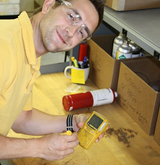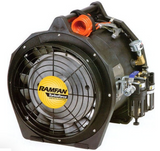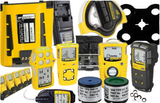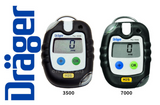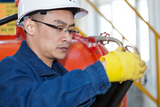Blog
Gas Detector Bump Test: Bump Testing and Calibration of your Gas Monitors
Gas monitors need regular calibration and bump testing if you want to be sure they are working properly. Like a guitar, monitors can drift out of tune. You've got a couple of choices to get it working properly. And as everyone who owns a gas monitor knows - whether it's a multi-gas monitor like the GasAlert Micro Clip XT, or a single-gas monitor like the
Gas Clip Technologies H2S Monitor - a quick bump test before using it to protect your life is an excellent, and highly recommen
…
Jan 14th 2015
BW Honeywell Factory-Trained Gas Monitor Know-It-Alls
Before we upgraded our facilities, sent our tech guys to Level 3 BW Honeywell gas monitor training, and increased our factory-direct parts supply to become a
BW Factory Authorized Service Center, these guys were already pretty unbearable. Sure it was handy to have someone around who could drill down to the smallest detail of monitor capabilities and explain error codes while grabbing their lunch from the company fridge. It's the calibration knowledge, the sensor life, the warranty informat
…
Jan 8th 2015
Getting The Right Gas Monitor For Your Company
Gas detection is serious business no matter what type of work you do. Your company may not need the level of protection a petroleum production facility requires, but every company using gas detection technology wants to make a good investment in their monitors. Some work sites need to know if hydrogen sulfide levels change even a small percentage. Others are fine waiting for the alarm to sound. The differences in your gas monitoring needs will affect the type of gas monitor that's right for y
…
Oct 29th 2014
Silent and Deadly, Proper Gas Detection Saves Lives
I’m fascinated about the basics of atmospheric monitoring, how to change the air in a confined space by supplying ventilation, and effective uses of ducting. Aren’t you? Relying solely on your nose (no matter how magnificent it may be) is not the right method to detect airborne hazards. Many gases dull the senses over time, and only a proper gas detection unit with a test probe can properly asses the atmosphere of a confined space.
The shape and location of many confined spaces make them
…
Sep 14th 2014
BW Honeywell Parts and Accessories - All Of Them
We've always carried a great selection of
gas monitors from BW Honeywell. And we've always had the important related items like the MicroDock II Docking Stations. We've even had loads of sensors and accessories. But now we have all of them.
That's right. Everything. The whole gas-detecting enchilada. Everything you've ever wanted from BW Honeywell pertaining to the monitors we sell is now available on our site. Every
hydrophobic pump filter, every set of replacement screws for you
…
Jun 18th 2014
New Alarm Point Settings on RKI Portable H2S Monitors
Recently
RKI Instruments sent out a notice explaining a change to their alarm settings on Eagle 2, GX-2009, and GX-2012 monitors. In order to comply with new industry standards developed by the fine folks at the American Conference of Governmental Industrial Hygienists (ACGIH), RKI Instruments is lowering their Hydrogen Sulfide (H2S) threshold limit values.
These aren't the regular lower level alarms (like someone who writes blogs and has two thumbs first thought). These are the expo
…
Jun 2nd 2014
Draeger Pac 3500 and Pac 7000 Monitors Really Are Different
Draeger has created some of the most widely used and accurate industrial gas detection devices in history. But many of the
single-gas units look exactly alike. What are the differences and why are they trying to confuse us?
We've all heard it's what's on the inside that counts. That is especially true for the Draeger
Pac 3500 and Pac 7000 single gas monitors. The housings are exactly the same, and at a glance you'd be hard pressed to tell the difference. But these two monitors var
…
May 27th 2014
Which Gas Cylinder Regulator Do I Need For My Gas Monitor?
All gas monitors need to be bump tested, even if they don't require calibration. (Yes, that goes for you guys with single gas disposable monitors too.) To test your monitor you're going to need both
calibration gas and a regulator. Your calibration gas mixture will be determined by the type of sensors in your gas monitor. Your regulator will have to fit your bottle of gas. Problem is there are a couple of different types of regulators, and it's not very intuitive figuring out which you'll
…
May 19th 2014
H2S Monitor Bump Test: How Often Should My H2S Monitor Be Bump Tested?
A customer from the Chinese division of a large petroleum company emailed us this week to ask how often their
BW Clip H2S Monitors should be bump tested. Since we sell more of these monitors than any other at PK Safety Supply, it would seem logical that we'd have a ready answer. But we don't.
It's not because we don't care, or we don't think it's important. It is. Here's the situation: Officially, the manufacturer BW Honeywell recommends periodically testing the response of the hydro
…
Apr 28th 2014
Wireless QRAE 3 Confined Space Gas Detector from RAE Systems
RAE Systems is the manufacturer of the
QRAE 3, the newest multi-gas monitor for confined space entry. Up to four sensors can be configured in this device for combustible gases (LEL), Oxygen (O2), Carbon Monoxide (CO), Sulfur Dioxide (SO2), Hydrogen Sulfide (H2S), or Hydrogen Cyanide (HCN) depending on the specific needs of your facility.
The interesting thing about this monitor is the wireless configuration option. RAE Systems says this device will work in confined spaces as well. Fo
…
Apr 11th 2014



